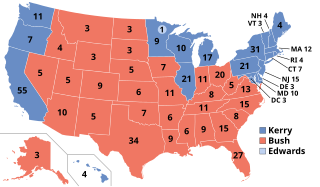
The 1936 United States Senate elections coincided with the reelection of President Franklin D. Roosevelt. The 32 seats of Class 2 were contested in regular elections, and special elections were held to fill vacancies. The Great Depression continued and voters backed progressive candidates favoring Roosevelt's New Deal in races across the country. The Democrats gained 5 net seats during the election, and in combination with Democratic and Farmer–Labor interim appointments and the defection of George W. Norris from the Republican Party to become independent, the Republicans were reduced to 16 seats. Democrats gained a further two seats due to mid-term vacancies. The Democrats' 77 seats and their 62-seat majority remain their largest in history.

The 1932 United States Senate elections coincided with Democrat Franklin D. Roosevelt's landslide victory over incumbent Herbert Hoover in the presidential election. The 32 seats of Class 3 were contested in regular elections, and special elections were held to fill vacancies.

The 1920 United States Senate elections were elections for the United States Senate that coincided with the presidential election of Warren G. Harding. The 32 seats of Class 3 were contested in regular elections, and special elections were held to fill vacancies. Democrat Woodrow Wilson's unpopularity allowed Republicans to win races across the country, winning ten seats from the Democrats and providing them with an overwhelming 59-to-37 majority. The Republican landslide was so vast that Democrats lost over half of the seats that were contested this year and failed to win a single race outside the South.

The 1942 United States House of Representatives elections were elections for the United States House of Representatives to elect members to serve in the 78th United States Congress. They were held for the most part on November 3, 1942, while Maine held theirs on September 14. This was the first election after the congressional reapportionment based on the 1940 census, and was held in the middle of President Franklin D. Roosevelt's third term. With involvement in World War II, it was the first wartime election in the United States since 1918.

The 1932 United States House of Representatives elections were elections for the United States House of Representatives to elect members to serve in the 73rd United States Congress. They were held for the most part on November 8, 1932, while Maine held theirs on September 12. They coincided with the landslide election of President Franklin D. Roosevelt.

Elections for the Massachusetts House of Representatives were held on November 7, 2006, with all of the 160 seats in the House up for election. The term of Representatives elected is two years, January 2007 until January 2009. The 2006 Massachusetts Senate election occurred on the same day as the House election, along with Federal and Gubernatorial elections.

The 2007 United States elections were held on Tuesday, November 6. During this off-year election, the only seats up for election in the United States Congress were special elections held throughout the year. None of these congressional seats changed party hands. There were also several gubernatorial races and state legislative elections, and numerous citizen initiatives, mayoral races in several major cities, and several types of local offices on the ballot.

The 2004 United States elections were held on Tuesday, November 2, 2004, during the early years of the war on terror and after the 2003 invasion of Iraq. Republican President George W. Bush won re-election and Republicans retained control of Congress.

The 2002 United States elections were held on November 5, in the middle of Republican President George W. Bush's first term. Republicans won unified control of Congress, picking up seats in both chambers of Congress, making Bush the first President since Franklin D. Roosevelt in 1934 to gain seats in both houses of Congress. In the gubernatorial elections, Democrats won a net gain of one seat. The elections were held just a little under fourteen months after the September 11 attacks. Thus, the elections were heavily overshadowed by the War on Terror.

2009 United States elections were held on Tuesday, November 3. During this off-year election, the only seats up for election in the United States Congress were special elections held throughout the year. In total, only the seat representing New York's 23rd congressional district changed party hands, increasing the Democratic Party's majority over the Republicans in the United States House of Representatives, 258–177.

The 2001 United States elections were held on November 6 of that year. The 2001 recession was a dominant issue throughout the year as well as the September 11 attacks and subsequent war on terror.

The 24th New York State Legislature, consisting of the New York State Senate and the New York State Assembly, met from November 4, 1800, to April 8, 1801, during the sixth year of John Jay's governorship, in Albany.

The 2011 Virginia state elections took place on November 8, 2011. All 140 seats in the Virginia General Assembly were up for re-election, as were many local offices.

The 38th New York State Legislature, consisting of the New York State Senate and the New York State Assembly, met from September 26, 1814, to April 18, 1815, during the eighth year of Daniel D. Tompkins's governorship, in Albany.

The 46th New York State Legislature, consisting of the New York State Senate and the New York State Assembly, met from January 7 to April 24, 1823, during the first year of Joseph C. Yates's governorship, in Albany.

The 48th New York State Legislature, consisting of the New York State Senate and the New York State Assembly, met from January 4 to April 21, 1825, during the first year of DeWitt Clinton's second tenure as Governor of New York, in Albany.

The 1936 United States elections were held on November 3, 1936, during the Great Depression. Democratic President Franklin D. Roosevelt trounced Governor Alf Landon of Kansas in a landslide and the Democrats built on their majorities in both chambers of Congress.
A landslide victory is an election result in which the victorious candidate or party wins by an overwhelming margin. The term became popular in the 1800s to describe a victory in which the opposition is "buried", similar to the way in which a geological landslide buries whatever is in its path. A landslide victory is the opposite of an electoral wipeout; a party which wins in a landslide typically inflicts a wipeout on its opposition. What constitutes a landslide varies by the type of electoral system. Even within an electoral system, there is no consensus on what sized margin makes for a landslide.

The 1998 Iowa State Senate elections took place as part of the biennial 1998 United States elections. Iowa voters elected state senators in half of the state senate's districts—the 25 odd-numbered state senate districts. State senators serve four-year terms in the Iowa State Senate, with half of the seats up for election each cycle. A statewide map of the 50 state Senate districts in the year 1998 is provided by the Iowa General Assembly here.

Two justices of the seven-member North Carolina Supreme Court and four judges of the fifteen-member North Carolina Court of Appeals were elected by North Carolina voters on November 8, 2022, concurrently with other state elections. Terms for seats on each court are eight years. These elections were conducted on a partisan basis.

















